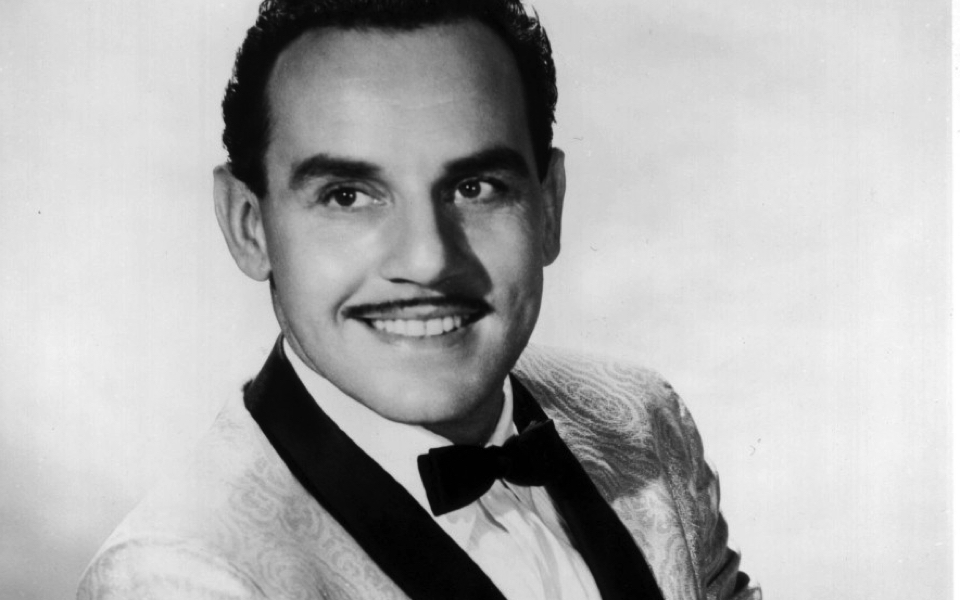Johnny Otis: The Greek Godfather of R&B

The history of Greeks in America is full of inspiring, heartwarming and often heartbreaking stories. All of them involve courageous immigrants who took a leap of faith and ventured into the unknown, working long and hard to secure a better life for themselves and their family. But, this is just the tip of a fascinating 200-year history of unique stories that changed not only the lives of those who crossed the Atlantic, but also America itself.
As diverse as the American demographic landscape, these stories span the gamut of human activity. Some bring me a special kind of pride. Those are the stories of Greeks committed to fighting social injustice and racial inequality, especially at a time when this came at a price. Their commitment was driven not only by their belief in social justice, but also by empathy, having themselves been at the receiving end of bias and discrimination.
The story of music legend Johnny Otis, born Ioannis Alexandros Veliotes, ranks highly among them. An important figure in the development of music in America, Otis was one of the first musicians in the US to cross the racial divide.
Inducted into the Rock and Roll Hall of Fame in 1994, he has gone down in history as the Godfather of Rhythm and Blues (R&B), a genre that originated in the African American community in the 1940s and gave the world some of its greatest singers and musicians.
The son of Greek immigrants, Johnny Otis was born on December 28, 1921, in Vallejo, California, and died on January 17, 2012.
His father Alexandros emigrated early in the 20th century from Ermioni, a coastal town in the eastern Peloponnese. His mother, Irene Kiskakes, came from the nearby island of Hydra. They had three children, John, Dorothy and Nicholas Veliotes, a retired US Foreign Service officer who served as US ambassador to Jordan and Egypt.
Johnny and his family lived the traditional life of Greek immigrants. They attended their local Greek Orthodox church, where his father was a chanter and where Johnny and his siblings studied the Greek language. Alexandros/Alexander was also active in various Greek organizations, including the now nearly defunct Greek-American Progressive Association (GAPA), a fraternal organization that emphasized integration rather than assimilation, in contrast to the Hellenic American Educational Progressive Association (AHEPA). Both were founded to defend Greek Americans against racism, most famously against the KKK.
His mother, Irene, had taught herself to paint and play the mandolin, talents she passed on to her son. Johnny also had a special fondness for the music that the Greek refugees of Asia Minor brought to the US.
He grew up in West Berkeley, California, a predominantly black neighborhood where his parents owned a grocery store. The intense anti-immigrant sentiment of the 1920s and ensuing legislation that limited immigration from certain parts of Europe, most notably Italians, Greeks, Serbs, Poles and Eastern European Jews, would inevitably sensitize Otis to racism and discrimination.
Living among African Americans, Otis developed a special affinity to this community. He especially loved the gospel choirs in the black churches, and immersed himself in African American music and culture, eventually coming to consider himself “black by persuasion.”
When his white high school teachers reprimanded him for overly associating with black students, he left school and set out on a career in music.
In 1941, when it was still against US law for black and white people to marry, he and Phyllis Walker, his high school sweetheart, eloped to Reno, where interracial marriage was accepted. While the marriage did not initially go over well with his mother, who feared retribution, Alexander welcomed his daughter-in-law with open arms. Johnny and Phyllis Otis were married for 70 years and had four children, among them the exceptionally gifted guitarist Shuggie Otis.
A multifaceted individual, Johnny Otis was a bandleader, musician, songwriter, producer, talent scout, painter, sculptor and civil rights activist. He began his career playing drums in big swing bands, but also played the piano. In his early 20s, Nat King Cole convinced him to move to Los Angeles, where he formed his own band and recorded his first hit, “Harlem Nocturne,” and opened the Barrelhouse, the first exclusively R&B club in the country.
In 1950, he had 10 singles in the R&B Top Ten, and in 1958, he wrote “Willie and the Hand Jive,” one of the most popular rock and roll songs of all time, later recorded by Eric Clapton. Among other songs, he wrote “Every Beat of My Heart,” which became a hit for Gladys Knight & the Pips. He also produced “Hound Dog” for the legendary Big Mama Thornton, which later became a hit for Elvis Presley, who failed to acknowledge the song’s creators. Otis played a major role in promoting African American talent, discovering some of America’s greatest singers and musicians, including the golden-voiced Etta James, Hank Ballard, Big Mama Thornton, Little Willie John, Little Esther Phillips and Little Richard, to name a few.
Otis spent the greatest part of his life fighting racism and injustice, and celebrating the achievements of the community he adopted as his own. In the 1960s, he supported the Black Power movement and Malcolm X, with whom he had a decades-long friendship. In 1968, he published “Listen to the Lambs,” a book that explains why he supported the 1965 Watts riots in Los Angeles, which were caused by a history of unfair housing, poor living conditions, high unemployment rates, inadequate schools, police harassment and general racial discrimination. But all this came at a price since the powers that be could not forgive a white man such an allegiance. This commitment, compounded by the advent of the British music invasion in the 1960s, as well as disco, hard rock and heavy metal in the 1970s, effectively ended Otis’s career.
Despite a brief though successful comeback in the late 1960s and early 1970s at the urging of Frank Zappa – another artist with Greek heritage – Otis pursued other interests, including painting, which had always played an important role in his life. In his teenage years, he had been offered a scholarship to the California School of Fine Arts. In 1965, he won a citywide Black History art contest with a painting of Nat Turner, leader of the 1831 slave rebellion.
In his biography, “Midnight at the Barrelhouse – The Johnny Otis Story,” George Lipsitz, professor of Black Studies and Sociology at the University of California, Santa Barbara, refers to him as a “towering figure in the history of African American music and culture.” This is a title Johnny Otis would have loved, and we, as a community, should be proud of.
Connie Mourtoupalas is an exhibitions curator and former president of the National Hellenic Museum in Chicago.





